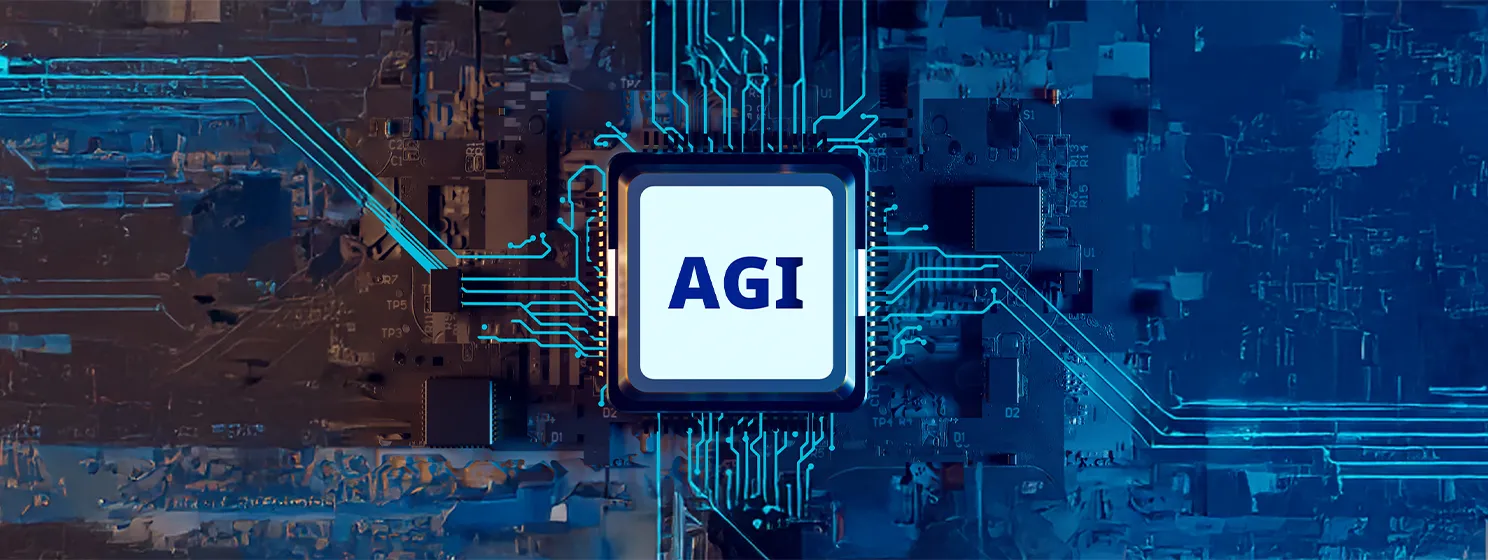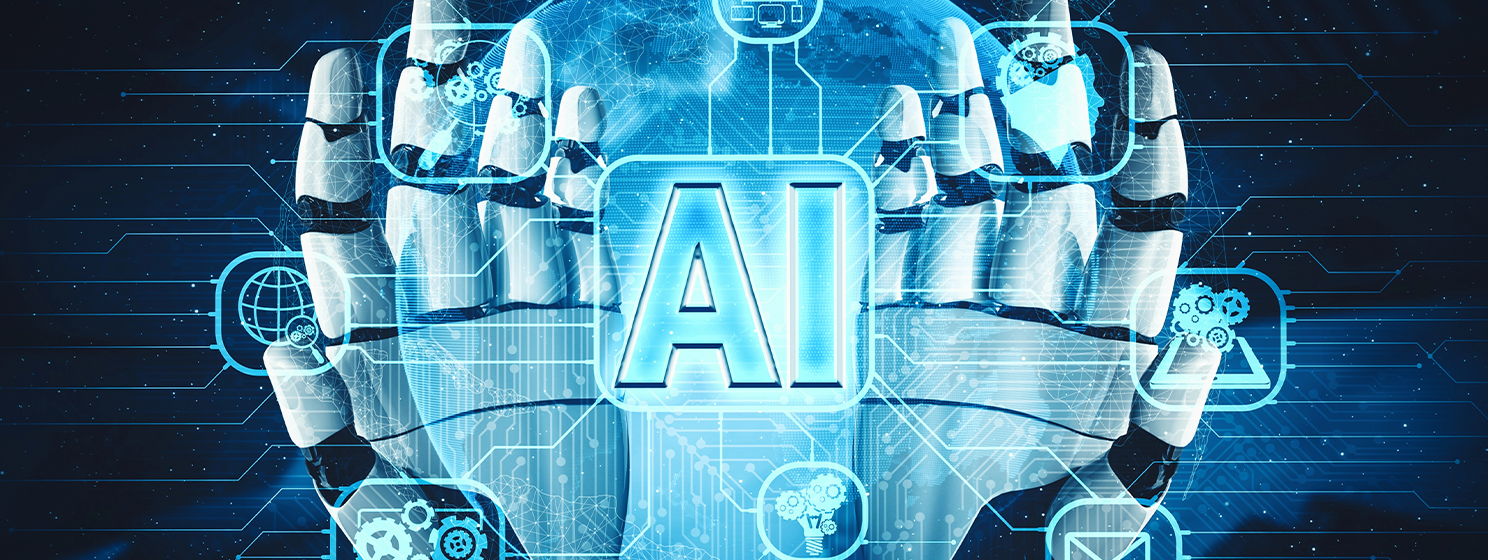|
Getting your Trinity Audio player ready...
|
In nearly every interview with one of the leading AI tech giants, you hear their teams, usually the CEO, talk about how the company is pursuing Artificial General Intelligence (AGI). Then they typically say something about how AGI is much closer to being delivered than we think.
But what actually is artificial general intelligence, and is it truly an innovation coming up the pipeline or simply a phrase designed to generate buzz and raise more money?
What is Artificial General Intelligence?
Artificial General Intelligence, or AGI, refers to an artificial intelligence (AI) system capable of performing any intellectual task that a human can do.
You might be saying to yourself, “But that sounds a lot like what AI models are currently able to do.” There’s some merit, and even some truth, to that thought. However, AGI is technically and functionally different from today’s AI systems, which most people call “narrow AI”: artificial intelligence designed to perform specific tasks or a limited range of functions. AI chatbots fall into the category of narrow AI.
Narrow AI doesn’t actually understand what’s going on. It’s just very good at recognizing patterns in large datasets, which it uses to produce outputs that appear intelligent. Behind the scenes, no comprehension or reasoning is happening, just data analysis, pattern matching, and predicting the next sequence of words based on the patterns it has learned from the massive datasets it was trained on.
By contrast, artificial general intelligence is supposed to resemble human intelligence more closely in how it reasons, learns, and adapts. It’s meant to have a deeper level of understanding and the ability to use that to a range of tasks and situations, even ones it has never seen or been trained on, similar to a human thinking on their feet.
In perspective, narrow AI is like an autopilot that can follow a programmed route but gets confused if something unexpected happens. AGI would be like having a fully trained driver behind the wheel who can drive anywhere, adapt to the weather, and improvise using everything they know.
The advantages of AGI
At the moment, AI platforms still need a human somewhere in the loop, prompting the AI, giving it rules, guidelines, and directions, and then making corrections to the outputs to ultimately and eventually produce an acceptable result. On the other hand, AGI doesn’t require a human in the loop.
An AGI system could learn any skill, “remember” that skill alongside everything else it knows, and independently connect the dots between those skills and prior learnings to arrive at new conclusions.
People are hopeful this means AGI can unlock scientific and technological breakthroughs and lead to innovations at a much faster rate. Having AGI would essentially be like having a researcher who never sleeps, constantly generating and testing hypotheses. For many, that’s the vision that makes AGI so compelling, and its supporters remain optimistic about what AI can do in the various industries that are derivatives of science, technology, math, and engineering.
The AGI gold rush: Billions spent on a product you may never noticeSeveral tech giants are pouring billions into AGI. OpenAI, Google DeepMind (NASDAQ: GOOGL), and Meta (NASDAQ: META) have all made their intentions to achieve AGI clear; however, each has a different timeline for when they believe AGI will arrive. Some avoid making predictions altogether, while others hint it could be anywhere from a few years to a decade away.
Although AGI has mostly been a backdrop to the general conversation about AI and its capabilities, I’d bet it starts playing a bigger, more frequent role in that conversation. For starters, I think this is because AI has plateaued. The topics, promised products, and buzzwords of the past are losing their edge and failing to pick up traction. The industry needs something new and appealing for the world to cling to to keep the AI dream alive, and I feel that “something new” will be AGI.
Beyond that qualitative speculation, there’s no question that the promise of delivering AGI helps companies raise money, money they need in massive amounts to keep their AI operations going, especially since profits in this resource-intensive industry have remained elusive.
The biggest battle in the war on AI is being fought on the “model” front. All else being equal, whoever has the best model has the best product and the best platform for consumers to tap into and developers to build on top of. The first company to legitimately create an AGI model will arguably be the “winner” of the war, at least until other companies catch up and have an AGI of their own that can compete for market share.
But all of this raises a crucial question: Although the race to AGI matters on a technical level, will consumers actually feel the difference? I have a feeling that in most cases, the answer is no. Many people probably won’t be able to tell narrow AI apart from AGI unless AGI manifests in some kind of hardware (like a lifelike robot) or a platform that’s always on, creating the feeling that it’s basically another intelligent person in the room with them at all times that makes its presence known.
Even then, I suspect consumers will encounter the same problem with new AI products. Many people just don’t know how they’re supposed to use them or how to get the most out of the AI that is available to them, so they default to treating AI as a search engine, which is a use case that seems to be becoming AI’s killer app, with the most obvious path to revenue by way of advertising revenue.
The final frontier of AI or another overhyped AI promise?
This brings me back to the big question: Is AGI really the next and possibly final frontier of artificial intelligence? Or is it just the next chapter in AI marketing?
The grand vision tech giants are promising to deliver, the one that’s getting investors excited to open their checkbooks, but that consumers, like they have with other overpromised AI products (think AI agents), don’t actually demand, wouldn’t know how to use effectively, and ultimately won’t be able to differentiate from the systems they already have?
It’s too soon to know. No company has achieved AGI yet, and the conversations regarding how it will affect consumers haven’t kicked off yet either. But as time goes on, AGI will either materialize, or we will realize that AGI is yet another rebranding of neural networks, machine learning, and generative AI that keeps the money flowing into the fundraising rounds from tech giants and keeps the AI dream alive.
In order for artificial intelligence (AI) to work right within the law and thrive in the face of growing challenges, it needs to integrate an enterprise blockchain system that ensures data input quality and ownership—allowing it to keep data safe while also guaranteeing the immutability of data. Check out CoinGeek’s coverage on this emerging tech to learn more why Enterprise blockchain will be the backbone of AI.
Watch: Artificial intelligence needs blockchain

 09-06-2025
09-06-2025 





